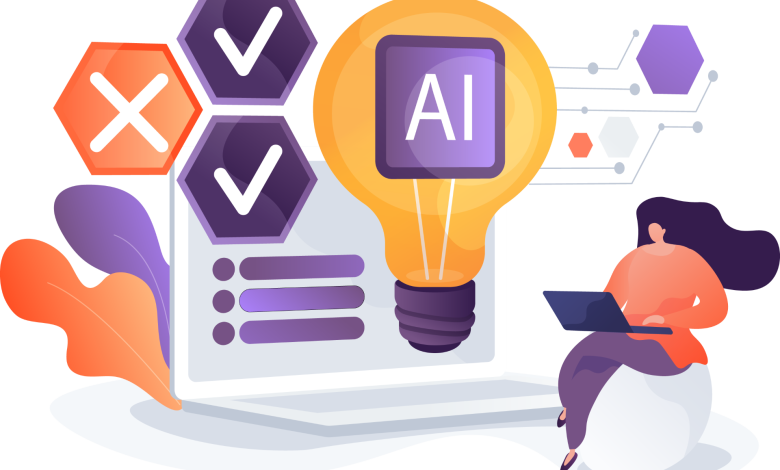
Let’s be honest. AI pilots don’t fail because the tech doesn’t work. They fail because most teams go in blind, launching one-off experiments without the AI fluency, pilot structure, or strategic roadmap to scale.
The result? A flashy demo that gets attention but fizzles upon stress. A use case that sounds solid but requires endless iterative tweaks, all while eroding trust. Before long, leadership is quietly asking whether the hype was ever real.
Given those shortcomings, it’s no shock that nearly 9 out of 10 AI pilots never make it out of the sandbox.
The issue isn’t the latest AI model. It’s the framework around it.
Why Most AI Pilots Fail (and Why That’s Not the Problem)
Most companies treat AI pilots like science projects. One department, one idea, one shot. Then silence. No iteration plan. No rollout strategy. And definitely no metrics that anyone can defend.
Here’s the part nobody says out loud:
Failure is the point.
A good pilot should surface risk, highlight misalignment, and have AI-fluent humans shadowing outputs to catch gaps early. That stops you from scaling a flawed idea and saves you from making an expensive mistake.
The real problem is when a pilot fails and no one learns anything from it. No clarity on what went wrong, no trusted metrics, and no system to fix it. Just anecdotes and hand-waving, leaving the org wondering what happened.
AI fluency makes the difference.
With the right design, every AI workflow failure becomes feedback. Teams know when to adjust and when to stop because the success rubric is clear upfront.
Well-structured AI pilots aren’t just experiments. They’re actionable, repeatable, and scalable.
Because the best pilots never ask, “Did it work?”
They answer the question laid out at the start: “Is this worth scaling, and how do we know?”
Scaling Starts With The Pilot
Like most business frameworks, AI pilots start with the end goal in mind: creating a workflow that will consistently deliver outputs that meet the organization’s criteria. OpenAI launched the OpenAI Use Case Scaling Framework in late 2024 for enterprises to use as a guide for AI pilots. We expanded it to five practical steps to scale any AI pilot.
- Discovery and Pilot: Answer the questions, “Does it work and is there real value” by identifying high-potential use cases that solve a real problem with measurable impact, not just “cool ideas.”.
- Scalability Assessment: Determine “should we scale it?” by scoring each pilot on impact, feasibility, and risk..
- Prioritization: Decide where to start by ranking use cases by composite scores to weed out low-value and high-risk efforts.
- Scaling Roadmap: Launch safely with a phased rollout plan with milestones, integrations, change management, and guardrails.
- Continuous Evaluation: Ensure each workflow is still safe and delivering value by tracking KPIs, re-assessing risks, retraining or retiring as needed, and feeding lessons back in the discovery loop.
Pilots built this way prove from the outset whether an AI workflow can keep delivering.And not all will. But with this process, orgs immediately know to continue, kill, or adapt each pilot.
Three Ways to Doom a Pilot Before it Ever Launches
A recent MIT study found that 95% of GenAI pilots fail to deliver financial impact. Here’s why.
- Success in a silo doesn’t scale.
A content workflow that works fine in a controlled testing environment may break after multiple reps. Without stress-testing, drift and hallucinations creep in quickly. - Weak business cases get ignored.
If results aren’t tied to KPIs that matter to the c-suite (like revenue growth, cost reduction, or customer satisfaction), leadership will dismiss the pilot as a novelty. - No AI fluency = no shared reality.
If a manager doesn’t understand prompting, and an executive only hears buzzwords, they aren’t working from the same playbook. That gap kills momentum.
What a Scale-Ready Pilot Looks Like
A scale-ready pilot earns executive buy-in because it proves both technical value and clear operational readiness.
It starts with ROI tied to business metrics. Entire workflows are documented. Prompts are dialed in to repeatedly deliver. Integration points are tested against existing systems. Governance and compliance are built in from day one (along with risk assessments and fallbacks).
A strong pilot also includes review loops to sharpen performance before scale. Everyone knows when AI runs solo and when a human steps in. There’s a rollback plan if something breaks.
That’s the difference between an experiment and infrastructure. While an experiment can prove technical muscle, infrastructure builds trust between execs, teams, and customers.
AI Is Not the Point. AI Fluency Is.
Too many pilots fail because they’re treated as isolated, low-stakes science experiments. But AI isn’t a gadget you try out once. It’s a capability you embed into the way your business actually runs.
That means upskilling across every level. Executives set the tone, while managers define the workflows and employees co-create.
When teams share a common AI language and the framework is baked in from the start, adoption stops being a leap of faith, and instead becomes the logical next step.
From Pilot to Blueprint
The best pilots end with a playbook. One that shows how to repeat wins, align innovation with business goals, and scale when all the agreed-upon criteria are met.
And when that happens? You’re no longer running an experiment. You’re building the foundation for how your business will actually run with AI.





